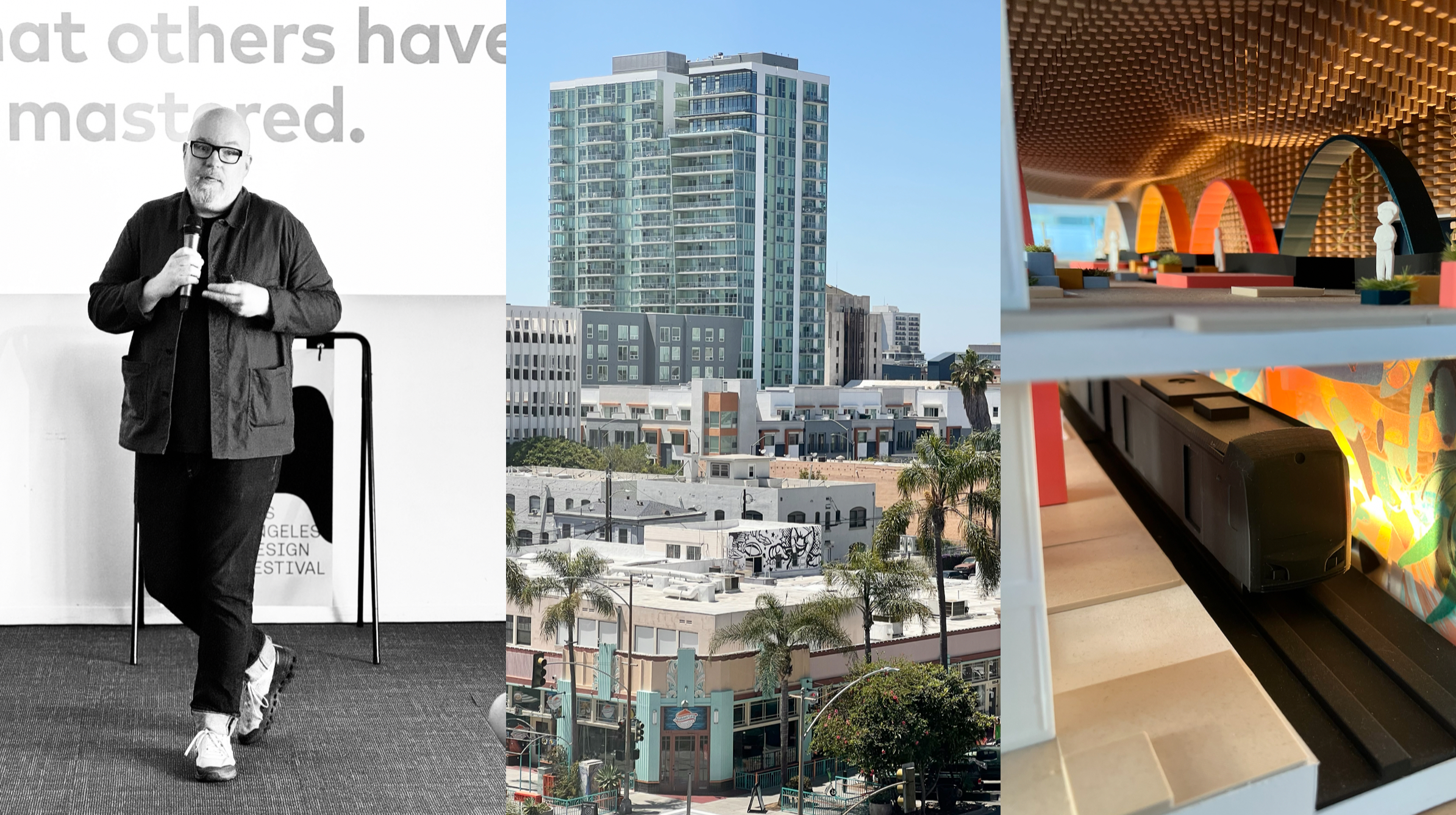
Also available on LinkedIn and in Japanese
Food Futurism at LADF 2025 – All aspects of food need reimagining
Executive Creative Director Erika Abrams and The Los Angeles Design Festival once again showed why the event is one of the most exciting on the global design calendar. With a broad remit, multiple locations and huge audiences, it's an opportunity for true contribution and collaboration.
As a returning speaker I focused on food within the festival’s larger theme of Design Futurism. Five days of ideation on a topic that matters to us all: Food and the role of cities.
Based on this talk ('Designing the future of food – Hyper-local and the global perspective') delivered with collaborator Justin Dauer, and conversations with our hosts at urban architecture practice Studio 1:11 and the audience, here are our six (out of 12) important areas for designers, cities and communities to focus on:
- Waterways, lakes and near-shore ocean areas hold the key to many design and logistical challenges when it comes to food production and distribution. Shifting our mindsets away from land-based production opens up new possibilities for growing and harvesting. Open space, water adjacent and even movable, water surfaces are as useful as land (see the Singapore based NsFI project visual below).

-
All of us city dwellers need to take an active role in planting, tending, growing, harvesting, storing, distributing, preparing and waste managing. And accommodating those who are not able to, and those who simply don’t want to, participate. We need to design for collaboration not perfection. Considered use of AI plays a role here, as proven by the PlantVillage AI project in Kampala, Kathmandu and other global cities.
-
Growing food at scale as a community (or city, neighbourhood, block, building) requires embracing a messy, dirty, smelly, icky reality and designing resilient systems that work with, not against, this truth. The expression “getting your hands dirty” has never been more appropriate.
-
New hyper local economies will emerge. Some of them shady and focused on avoiding responsibility. This requires regulatory innovation. Also needed is rethinking rules around land use and access including to abandoned buildings, underground spaces, and underutilized harbors.
-
There’s no room for ego, as Buddhist nun and chef Jeong Kwan reminds us through her work (and in Netflix hit Chef's Table). In the process she speaks volumes about the mindset we all need. For another take, be inspired by the humble yet immensely powerful fungi! Fungi can reach vast distances and live for thousands of years. Decentralised and adapting to a multitude of realities.
-
Involving everyone does not only mean making participation available to those facing economic hardship. The so called elite can not be left out. This means accepting and appreciating initiatives that may at first rankle or feel unnecessary. Like Michelin-starred chef Mattias Dahlgren working with students of jewellery design at the University of Arts, Craft and Design to rethink utensils. That too has relevance and value.
For the other six life-sustaining take-aways and to contribute to the future of food, drop me a line. Let’s work together to make food futurism a well-designed, fully functional food reality.
Header image: Me at LADF. Downtown Long Beach. Kevin Sherrod's The money train.
